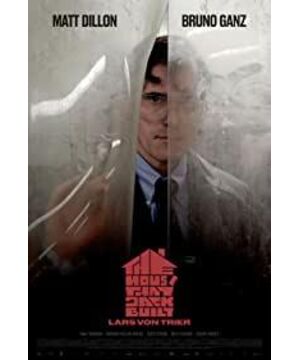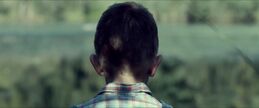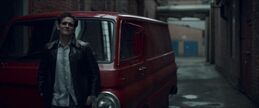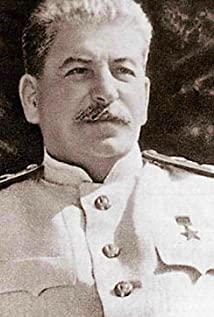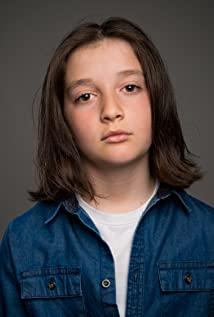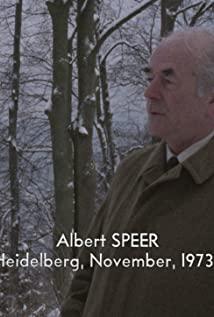It can be considered that in "This House Is Made by Me", Lars von Trier completely abandoned the "dogma95 manifesto" that he believed in his early years of external formalism that concretizes the rules of imagery. I regard it as The awakening of his image freedom consciousness that sprouted in the process of movie art rumbling like a train. In this film, von Trier inherited the creative ideas of the previous work "Female Addicts", discarded the film ontology that had been stubbornly believed in the early years, and boldly exposed the self in the creative state to some kind of open communication space. Next, try to use the form of artistic dialogue to deconstruct this world that I am very familiar with.
In fact, we might as well regard this self-breakthrough as Feng Tier's unlocking of the elements of film as an all-encompassing art category. According to the traditional (Kanudu's) view, film is a seventh art that integrates six types of art forms, but here in Von Trier, you can clearly feel his independent use of the original image attributes of the film. Transformation: All the signs and images that appear in the dialogue are presented to the audience in a PPT-like audio-visual language format without hesitation.
What’s interesting is that although the artistic elements selected by von Trier are all superficial examples of spectacle and popularization, their function in the entire film is actually far more than just explaining and advancing the plot of the film. , They also maintain the isomorphism with the core of the film on all levels, and become the most powerful argument for this thesis film. Those Glenn Gould and William Blake, who appeared in a relaxed and smart posture between the impact of the images, not only created the effect of alienation, but also achieved a certain degree of interaction by replacing the audience's immersive thinking. The purpose of audience interaction.
From this level, the whole film is not as "evil" as it is intuitively expressed, and it is not a defense of a murderer’s pursuit of the beauty of "evil". On the contrary, it is based on A form of nakedly exposing and satirizing the self-judgment process of a murderer, to stimulate the audience to think about self-desire and sin at the same time. Rather than presenting a morbid artistic aesthetic or impulsivity, I prefer to regard it as a moral experiment deliberately arranged by the director-the discomfort or even disgust caused by the impact during the viewing process is exactly what the film wants. Part of the communication.
In other words, the film’s image presentation method has reached a certain sense of "objectivity." One part, it is like a mirror soaked in blood, forcing the audience to look directly at all the ugliness in their hearts in a shocking way.
Another point of view that can support this is that in this film, Feng Tier let his protagonist completely escape a "person" restricted by collective and social laws. He completely disdains to find murderers from the social level. A defensible motive, but to uncover all the unique and inexplicable quirks that he has in the first half of the film, and directly express the beauty of all these at the end of the film. The ugly contempt and sarcasm with the cloak of art.
And the point worth thinking about is that at the end of the movie, Jack left a tear. On the surface, von Trier was to use the image of an undisturbed murderer to cast his willful compassion on the world. But in fact, the whole film reveals Von Trier’s self-referential tendencies. He is soberly aware that his quirks are indeed "illness", rather than the "art" that makes the self appear unique and noble. The pain of extreme contradictions was revealed in the process of self-judgment.
So at the end of the film, the visually impactful "Dante and Virgil in Styx" appeared to be less obtrusive. In this process of reflection, Von Trier completed the retrospective of many famous artists in human history, and Glenn Gould, who merged himself with music; created "Tiger and Lamb" to resist the killing of human beings. The accusing William Blake; the Dante who knows heaven and hell...While creating beauty and art unheard of by mankind, they are also suffering from the constant conflict of self-values and collective will. It is in this retrospective journey that Von Trier discovered the sympathy of sympathy: in the second half of the film, he replayed the most shocking counterattacks of most of his previous works, and completed his own past creation. The negation of the evil thoughts sprouted in the process.
However, it is easy to misunderstand the audience that before the end of the film, all of Jack’s narrations are set in a state of "self-defense". In fact, these defense statements are exactly von Trier. Before shooting "This House" had all the thoughts he had in the creative process, he soberly threw out one after another extremely confusing arguments, making everyone unconsciously immersed in a kind of "great art is about to create "In the wonderful illusion, at the end of the film, we used a surreal alienation technique-the appearance of Virgil's real body, to cut all these sinful fantasies, and plunge us into the endless hell of ourselves.
As a result, the stunning negative effects can also be explained. After profound analysis and insight into who the death knell is to be heard, the dazzling brightness stands on the opposite of absolute darkness and completes it in a posture of ruining Nirvana. Self-judgment and reshaping.
View more about The House That Jack Built reviews


